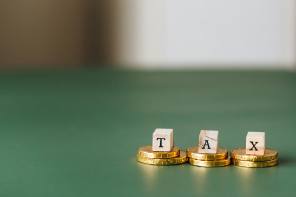

Chancellor Philip Hammond’s Spring Budget was accused of picking on small business and entrepreneurs.
The Conservative party was swiftly branded by self-employed people as no longer being the party of business, “just the party of big business” when Mr Hammond’s Budget decision to increase his tax take ahead of Brexit left them worse off.
Kicking off his first – and final – Spring Budget, Mr Hammond said his Budget provided a strong stable platform for negotiations on how the UK should exit the European Union.
Picking through the details of today's (8 March) speech Mr Hammond, who took on the role of chancellor after the UK voted to exit the European Union, offered three changes to assist businesses with changes to rate relief.
He promised no business losing small business rate relief would see their bills increase beyond £50 a month.
The chancellor said business rates bring in £25bn a year, so he can't abolish this form of taxation but he did unveil three measures to help those affected.
Nine out of 10 local pubs will have a £1,000 discount on their business rates bill under proposals outlined in the Budget plus a £300m fund will be created for local councils to offer discretionary relief for hard-hit cases.
Self-employed hard hit
The Budget also tackled levelling the playing field between different employment forms.
Mr Hammond said lower National Insurance contributions from self-employed workers was forecast to cost public finances £5bn this year alone.
To make the system "fairer", he said that National Insurance contributions will increase for the self-employed by 1 per cent to 10 per cent from April next year.
That will then increase again to 11 per cent in 2019.
Together with other changes, Mr Hammond said this would raise a net £145m a year - around 60p a week per self-employed person.
He also tackled the "unfair discrepancy" between the total tax paid by an employed worker and one who has set up his own company.
Mr Hammond announced he will reduce the tax-free dividend allowance for directors and shareholders from £5,000 to £2,000 with effect from April 2018.
Re-affirming election pledges
He confirmed the Conservative government would stick with their 2015 election manifesto promise to raise the threshold at which workers pay income tax to £12,500 a year by 2020.
He also pledged that by that time the 40 per cent tax rate would not kick in until £50,000.
The chancellor also repeated that working parents with three and four-year-olds will get their free childcare entitlement doubled to 30 hours a week.
He used the occasion of International Women's Day to pledge £20m to support the campaign Against Violence Against Women and Girls, £12m from tampon tax going to women's charities, plus £5m to returnships to the public and private sector, helping people back into employment after a career break.
Those individuals enjoying tax loopholes were also hard hit as Mr Hammond said while the UK had the lowest tax gap in the world "there is more that we can do".
He said he would tackle the abuse of foreign pension schemes, introduce UK VAT on roaming telecoms services, plus implementing new financial penalties for professionals who enable a tax avoidance arrangement that is later defeated by HM Revenue & Customs.
These moves to tackle tax avoidance will, he said, raise £830m over the forecast period.
As expected, Mr Hammond also committed to more free schools being built in England.
A further 110 new free schools are to be built on top of the previous pledge of 500.
State of economy
In terms of what impact his plans will have on the wider economy, the government’s borrowing forecast was cut to £51.7bn in 2016.
Mr Hammond announced the Office for Budget Responsibility had - as expected - raised its economic growth forecasts for this year.
The Office for Budget Responsibility now expects the UK economy to grow 2 per cent rather than 1.4 per cent.
In 2018 growth is forecast to slow to 1.6 per cent, before picking up to 1.7 per cent, then 1.9 per cent, and back to 2 per cent in 2021.
But inflation was forecast to hit 2.4 per cent this year, according to the Office for Budget Responsibility.
It will then fall to 2.3 per cent in 2018 and 2 per cent in 2019, according to the Office for Budget Responsibility.
If the Office for Budget Responsibility is correct that will keep it at or above the Bank of England's 2 per cent inflation target for three years.
emma.hughes@ft.com



